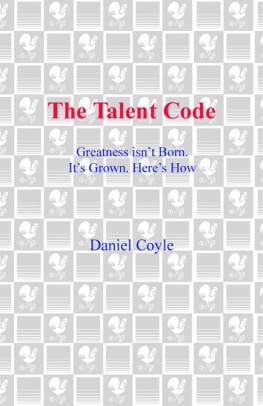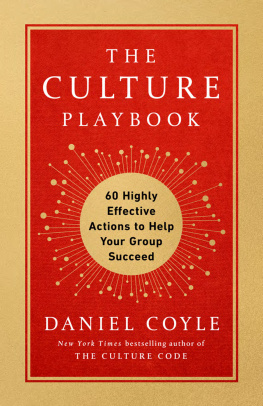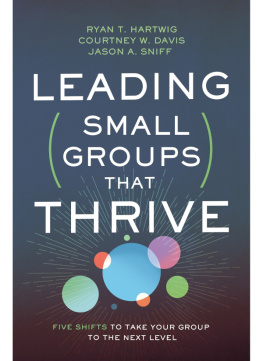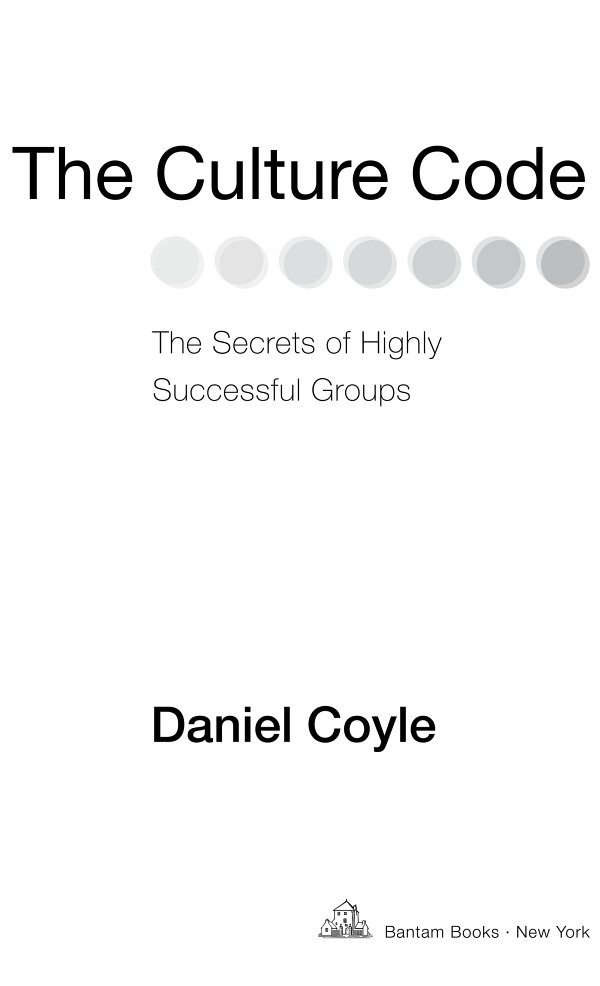Daniel Coyle - The Culture Code: The Secrets of Highly Successful Groups
Here you can read online Daniel Coyle - The Culture Code: The Secrets of Highly Successful Groups full text of the book (entire story) in english for free. Download pdf and epub, get meaning, cover and reviews about this ebook. year: 2018, publisher: Bantam, genre: Romance novel. Description of the work, (preface) as well as reviews are available. Best literature library LitArk.com created for fans of good reading and offers a wide selection of genres:
Romance novel
Science fiction
Adventure
Detective
Science
History
Home and family
Prose
Art
Politics
Computer
Non-fiction
Religion
Business
Children
Humor
Choose a favorite category and find really read worthwhile books. Enjoy immersion in the world of imagination, feel the emotions of the characters or learn something new for yourself, make an fascinating discovery.

- Book:The Culture Code: The Secrets of Highly Successful Groups
- Author:
- Publisher:Bantam
- Genre:
- Year:2018
- Rating:4 / 5
- Favourites:Add to favourites
- Your mark:
The Culture Code: The Secrets of Highly Successful Groups: summary, description and annotation
We offer to read an annotation, description, summary or preface (depends on what the author of the book "The Culture Code: The Secrets of Highly Successful Groups" wrote himself). If you haven't found the necessary information about the book — write in the comments, we will try to find it.
Where does great culture come from? How do you build and sustain it in your group, or strengthen a culture that needs fixing?
In The Culture Code, Daniel Coyle goes inside some of the worlds most successful organizationsincluding the U.S. Navys SEAL Team Six, IDEO, and the San Antonio Spursand reveals what makes them tick. He demystifies the culture-building process by identifying three key skills that generate cohesion and cooperation, and explains how diverse groups learn to function with a single mind. Drawing on examples that range from Internet retailer Zappos to the comedy troupe Upright Citizens Brigade to a daring gang of jewel thieves, Coyle offers specific strategies that trigger learning, spark collaboration, build trust, and drive positive change. Coyle unearths helpful stories of failure that illustrate what not to do, troubleshoots common pitfalls, and shares advice about reforming a toxic culture. Combining leading-edge science, on-the-ground insights from world-class leaders, and practical ideas for action, The Culture Code offers a roadmap for creating an environment where innovation flourishes, problems get solved, and expectations are exceeded.
Culture is not something you areits something you do. The Culture Code puts the power in your hands. No matter the size of your group or your goal, this book can teach you the principles of cultural chemistry that transform individuals into teams that can accomplish amazing things together.
Advance praise for The Culture Code
Ive been waiting years for someone to write this bookIve built it up in my mind into something extraordinary. But it is even better than I imagined. Daniel Coyle has produced a truly brilliant, mesmerizing read that demystifies the magic of great groups. It blows all other books on culture right out of the water.Adam Grant, New York Times bestselling author of Option B, Originals, and Give and Take
If you want to understand how successful groups workthe signals they transmit, the language they speak, the cues that foster creativityyou wont find a more essential guide than The Culture Code.Charles Duhigg, New York Times bestselling author of The Power of Habit and Smarter Faster Better
Daniel Coyle: author's other books
Who wrote The Culture Code: The Secrets of Highly Successful Groups? Find out the surname, the name of the author of the book and a list of all author's works by series.










